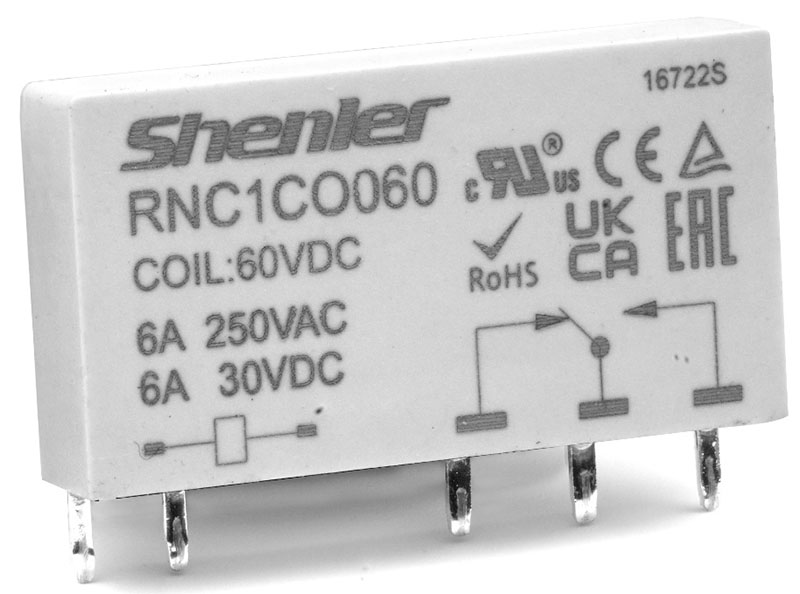Our News
Contact Us
- Tel:0086-135 8771 2673
- Tel:0086-135 8771 3265
- Email:[email protected]
- Address:No.666 East Jiaotong Rd.,Wu'niu Street,Yongjia,Wenzhou,Zhejiang,China
Precautions for Safe Use of PCB Relays
News | Aug 18,2023
The Printed Circuit Board (PCB) relay, often simply referred to as a “PCB relay,” is a fundamental component in many electronic devices and systems.
These relays are specifically designed to be soldered onto PCBs and are integral in establishing or interrupting electrical circuits at specified times.
Given their pivotal role, ensuring their safe use is of utmost importance to prevent potential damage to the device and to ensure the safety of users.
In this post, we’ll delve into the various precautions one should consider for the safe use of PCB relays.
What is a PCB relay?
A PCB relay, also known as a printed circuit board relay, is an electronic device that allows electrical signals to be switched on and off within an electrical circuit. It consists of a small electromechanical switch mechanism that is mounted on a printed circuit board (PCB).
The relay is composed of several key components, including a coil, a stationary contact, and a movable contact. When an electrical current is applied to the coil, it generates a magnetic field that attracts or repels the movable contact, thereby completing or breaking the circuit.
PCB relays are used in a wide range of applications and industries. They are commonly utilized in electronic devices, control systems, automation equipment, industrial machinery, and telecommunications equipment. PCB relays offer advantages such as compact size, high switching capability, low power consumption, and good reliability.
Understanding Specifications
Before using a PCB relay, one should thoroughly understand its specifications. This includes the relay’s rated voltage, current capacity, and other essential parameters. Using a relay beyond its specified limits can lead to malfunction, reduced life, or even catastrophic failure.
Avoiding Overloads
Subjecting relays to loads exceeding their rated capacity can lead to contact welding or burning. Always ensure that the relay’s load is within its specified parameters.
If the connected load might have unpredictable spikes, consider using a relay with a higher rating or additional protective components.
Mind the Ambient Temperature
Relays are affected by their surrounding temperature. Exposing a PCB relay to temperatures outside its specified range can impact its performance and decrease its lifespan.
For devices expected to operate in extreme temperatures, special high-temperature or low-temperature relays should be considered.
Protect Against Overvoltage
Overvoltage conditions can damage the relay’s coil and contacts. Employ voltage protection measures such as varistors or transient voltage suppressors to safeguard the relay against unexpected voltage spikes.
Consider the Mounting Position
The orientation of the relay can influence its performance, especially in the case of larger or high-power relays. Some relays are designed to be mounted in a specific position for optimal performance and longevity.
Address Vibration and Shock Concerns
Excessive vibration or shock can affect a relay’s performance or even cause physical damage. If the device is to be used in an environment with significant vibration or potential for mechanical shock (like certain industrial applications or automotive systems), opt for relays specifically designed to handle such conditions.
Consider Humidity Levels
High humidity can lead to the formation of condensation within the relay, affecting its operation. If the device is likely to be exposed to varying humidity levels or potential condensation, sealed or hermetically sealed relays should be used.
Ensure Proper Soldering
Improper soldering can lead to weak connections, which might result in intermittent relay operation or even circuit breaks. Follow the manufacturer’s guidelines for soldering temperatures and durations to ensure a secure and lasting connection.
Regular Inspection and Maintenance
For devices that see regular or critical use, periodic inspection of the relay and its connections is advisable. Look for signs of wear, corrosion, or damage. In some cases, preventive replacement of relays in critical applications might be justified to avoid potential failures.
Using Snubber Circuits
For relays controlling inductive loads, a snubber circuit across the relay contacts can help reduce voltage spikes and extend the relay’s life. Snubbers often consist of a resistor and capacitor in series.
Understand Life Expectancy
Every relay has a certain life expectancy, typically defined in terms of operational cycles. While many relays will operate beyond their rated life, critical applications might demand replacements after reaching this limit to ensure reliability.
Store Relays Appropriately
If relays are stored before use, ensure they are kept in a cool, dry place and in their original packaging. This prevents potential damage or degradation before the relay is even used.
Stay Updated with Manufacturer’s Guidelines
Manufacturers often release guidelines, updates, or recalls based on field data and testing. Regularly checking for such updates ensures that you are aware of any potential issues or recommendations for the relays you are using.
Conclusion
Despite their small size and deceptive simplicity, PCB relays play a vital role in the function of many electronic devices and systems. Ensuring its safe and reliable operation is not just about following the rules but understanding the rationale behind them.
By taking the precautions listed above, you can significantly improve the performance, reliability, and safety of equipment that relies on these critical components.
--- END ---

